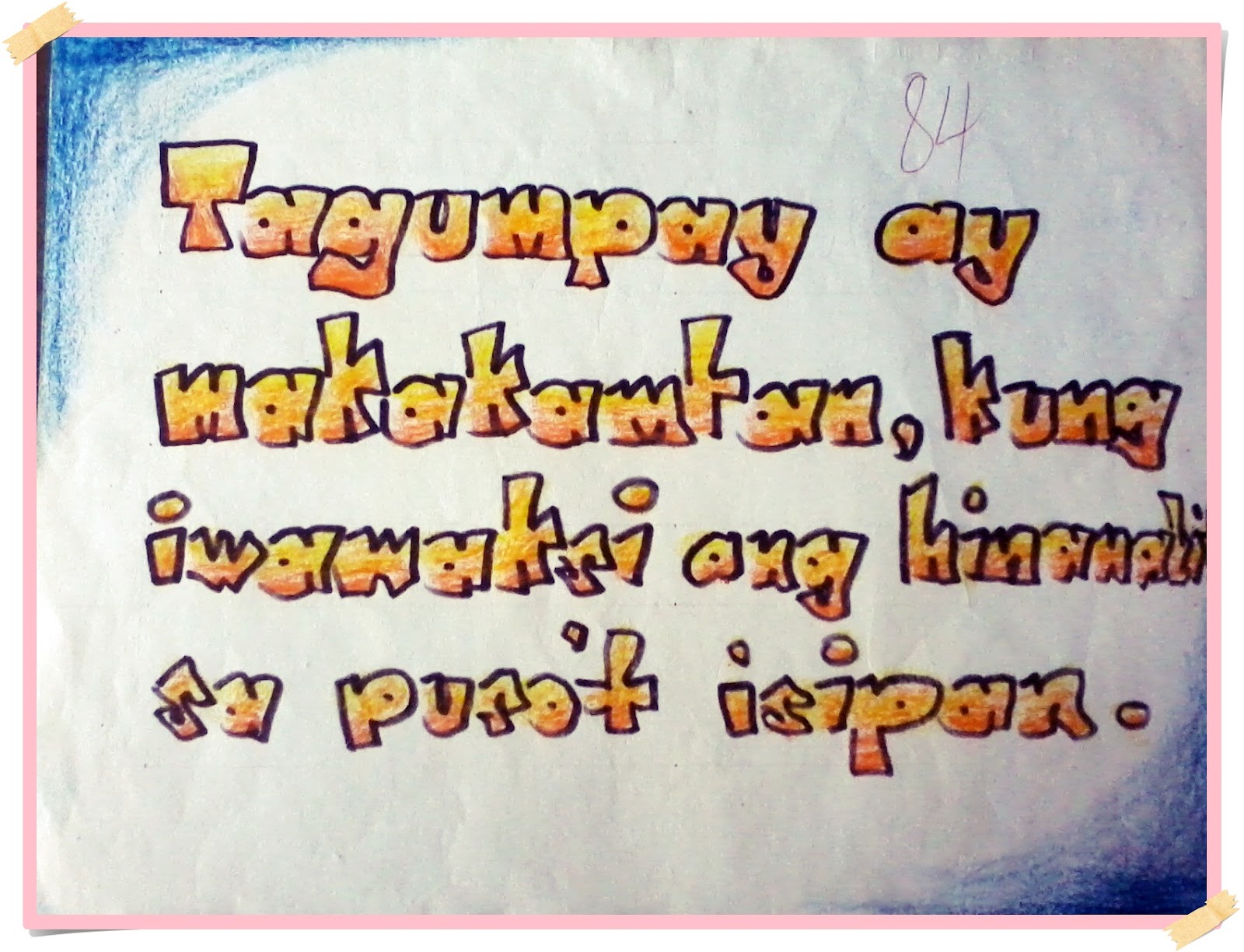Unlocking Wisdom: Exploring Filipino Proverbs (Mga Kasabihan)
Have you ever wondered how a short phrase can hold a wealth of wisdom passed down through generations? In the Philippines, these nuggets of wisdom are known as "mga kasabihan," or proverbs in the Filipino language. These concise sayings offer profound insights into Filipino culture, values, and beliefs. They reflect the collective experiences and observations of the Filipino people, providing guidance on how to navigate life's challenges and celebrate its joys.
Mga kasabihan are more than just quaint expressions; they are a powerful tool for communication, education, and social commentary. They encapsulate timeless truths and offer practical advice on everything from relationships and hard work to resilience and community. Exploring these proverbs offers a fascinating glimpse into the heart and soul of Filipino society.
The origins of Filipino proverbs are deeply rooted in oral tradition. Passed down from generation to generation through storytelling, songs, and everyday conversations, they represent a living history of Filipino wisdom. Many of these sayings reflect the influence of pre-colonial beliefs, Spanish colonization, and the ongoing evolution of Filipino culture. They also highlight the importance of family, respect for elders, and a strong sense of community.
Understanding the context and meaning of mga kasabihan can enrich your understanding of Filipino culture and values. These sayings often employ metaphors and symbolism drawn from nature, everyday life, and Filipino folklore. For example, the proverb "Kung may tiyaga, may nilaga" (If there's perseverance, there's broth) uses the image of a simmering pot of broth to emphasize the importance of patience and hard work in achieving one's goals.
Unfortunately, the increasing influence of globalization and modern media poses a challenge to the preservation of these traditional sayings. As younger generations become more exposed to global cultures, there’s a risk of these valuable cultural artifacts being forgotten. Efforts to document, promote, and integrate these proverbs into modern education are crucial for their continued relevance and appreciation.
One common example is "Nasa Diyos ang awa, nasa tao ang gawa" (God helps those who help themselves). This emphasizes the importance of personal responsibility alongside faith. Another example is "Ang taong nagigipit, sa patalim kumakapit" (A person in dire straits will cling even to a blade). This illustrates how desperation can lead people to make risky choices.
These proverbs offer several benefits. First, they provide valuable life lessons, offering guidance on ethical behavior, personal development, and social interaction. Second, they strengthen cultural identity by connecting individuals to their heritage and shared values. Third, they enhance communication by providing concise and evocative expressions that resonate deeply within the Filipino community.
Advantages and Disadvantages of Using Filipino Proverbs
| Advantages | Disadvantages |
|---|---|
| Concise and impactful communication | Potential for misinterpretation if context is not understood |
| Reinforces cultural values and identity | May sound clichéd or outdated if used inappropriately |
| Provides valuable life lessons and guidance | Can be difficult to translate accurately for non-Filipino speakers |
Five best practices for using Filipino proverbs effectively include understanding the context, using them appropriately in conversations, explaining their meaning if necessary, respecting their cultural significance, and encouraging their continued use among younger generations.
Five real examples of Filipino proverbs and their application in everyday life include using "Daig ng maagap ang masipag" to encourage punctuality, "Ang batang matigas ang ulo ay mahihirapan sa buhay" to emphasize the importance of obedience and respect, and "Aanhin pa ang damo kung patay na ang kabayo" to express regret over missed opportunities. Other examples include “Kung ano ang puno, siyang bunga” to discuss family resemblance and “Walang matimtimang birhen sa matiyagang manalangin” to emphasize persistence.
Frequently asked questions about Filipino proverbs often involve their origins, meanings, and relevance in modern society. People also inquire about how these proverbs are used in everyday conversations and how they contribute to Filipino cultural identity.
Tips and tricks for learning and using Filipino proverbs include listening to Filipino elders, reading Filipino literature, watching Filipino movies and television shows, and engaging in conversations with Filipino speakers.
In conclusion, mga kasabihan, Filipino proverbs, are a powerful testament to the rich cultural heritage of the Philippines. These concise and evocative sayings encapsulate centuries of wisdom, offering valuable insights into Filipino values, beliefs, and life experiences. From promoting strong family ties and emphasizing the importance of hard work to navigating complex social situations and finding humor in everyday life, these proverbs provide a timeless guide to navigating the human experience. By learning and appreciating these sayings, we not only gain a deeper understanding of Filipino culture but also connect with a universal wisdom that transcends time and place. Let us continue to share and celebrate these proverbs, ensuring that the wisdom of our ancestors continues to inspire and guide future generations. Explore the world of mga kasabihan, and unlock a treasure trove of Filipino wisdom.
Level up your stream navigating twitch pfp maker reviews
Unlock your creativity a guide to aesthetic drawing inspiration
Best songs for father daughter dance wedding a heartfelt selection













